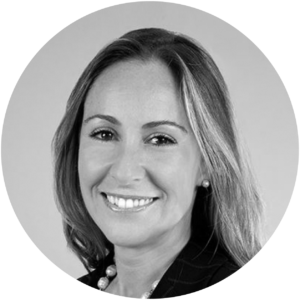How The Clearing Defines Strategy
Strategy work in the federal space requires a high degree of alignment between key organizational leaders due to the continually changing landscape of federal agencies. Many times what people describe as “strategy work” is actually implementation planning versus strategy development.
At The Clearing, we help our clients think about strategy differently. We focus on specific aspects of an organization to help leaders get crystal clear on where they should focus their efforts BEFORE developing an implementation plan.
We also put people at the center of our strategy efforts. That means we seek to understand the individual perspectives of those who are going to be tasked with driving the strategy forward and outfit them to ensure their teams are moving towards the fewest, most important actions to reach their goals. That people-first focus helps maintain alignment and cohesion throughout an engagement. We’re as attuned to achieving buy-in along the way as we are when delivering the final product.
“What makes our approach to organizational strategy unique is the fluidity between our Solution Areas.”
How Strategy Work Functions as Part of the Solution Area Ecosystem
The fluidity between our Solution Areas sets The Clearing’s approach to strategy apart. I work with my fellow Solution Designers to infuse best practices from our Culture and Customer Experience Solution Areas into the strategic planning process for our clients. This approach allows us to flex when new needs emerge and provide the best possible outcome for the work.
That fluidity also makes a large impact on how we gather upfront stakeholder perspectives, which is critical to how The Clearing facilitates the strategic planning process. We take pride in defining a client’s current experience (customer, employee, etc.) and defining the voices of those stakeholders. We believe those are the most significant drivers in setting an organization or agency’s overall strategy. It’s not just a check-the-box activity – it’s a key pillar of the process. It’s also where other Solution Areas often come into play.
For example, the whole structure and cadence of capturing voices and ensuring alignment along the way comes from our Culture Solution – we bring it in to influence the strategic planning process. The public experience is also a significant driver in how our federal clients are considering their strategic objectives. I’m fortunate that we have a dedicated CX practice to leverage for those purposes.
This becomes more important in today’s matrixed organizations, where problems may exist in isolation. It doesn’t matter if an organization develops a great strategy if it isn’t focusing on the experience of the client or the culture of those implementing that strategy.
“Many times what people describe as “strategy work” is actually implementation planning versus strategy development.”
Where Federal Strategy Work is Heading
I believe the emerging need in the federal space is for agencies to be able to rapidly and iteratively strategically plan and respond to change. Thanks to the speed of information, the days of setting a yearly plan, for better or worse, are mostly over. That means a significant part of our work is not only helping set the right strategic direction for clients, but ensuring today’s leaders are equipped to apply an iterative, strategic process; however, the budget process in the federal government makes it challenging for leaders to see strategy development as more than a static process.
The other big item is the impact the changing demographics of the United States has on how organizations act on their mission, including how they provide effective services to citizens, and recruit, train, and retain their employees. An iterative strategic process that considers these evolving factors will allow the federal government to be more responsive in service of the public. As we determine what strategy initiatives look like in the future, we must think about how to incorporate upskilling leaders and employees to meet that changing demand into strategic planning.
What’s Next
Keep an eye out for fellow Solution Designer’s deep dives into their respective Solution Areas: Jason Miller on Culture and Yasmeen Burns on Customer Experience. And if you want to chat about strategy or leadership development in the federal space, reach out to me directly at sonya.patel@theclearing.com.

 .
. 








 The Clearing’s Employee Experience
Improvement model, adapted from Itam
& Ghosh, 2020, focuses on three objectives:
The Clearing’s Employee Experience
Improvement model, adapted from Itam
& Ghosh, 2020, focuses on three objectives: 












